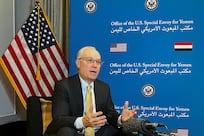The analysis of a commodity is a reasonably straightforward matter: production is reviewed to see what changes have taken place and similarly with consumption. An adjustment is then made for global economic conditions and whether there is likely to be a shortfall or surplus in demand or supply compared with previous years. On that basis a forecast is delivered.
Currency analysis differs in that interest rates are taken into account and consideration of governmental policy is thrown in to the mix. This is clearly a gross simplification of the process, otherwise we could expect all estimates to be 100 per cent correct - something that is rarely if ever achieved. But what do you do about a product that is a hybrid of the two? Where some investors focus on its commodity aspects and others on its currency features? That is the problem with gold. About 2,450 tonnes of the metal is produced each year but since gold is not destroyed in the "consumption" process all that really happens is that the stocks of the metal are being added to each year.
A generally accepted estimate is that there are now some 165,000 tonnes of gold that have been mined in the history of the world. Some of that is in museums, some held as "sentimental" jewellery that will never be sold, 30,000 tonnes still sits with central banks but much of it is being hoarded in bars, coins and "investment" jewellery. So if supply and demand are the key determinants then it is obvious that gold should simply fall each and every year as global stocks increase.
Similarly, interest rates are often cited as a key driver of currencies: the greater the yield the more attractive that currency becomes to investors and hence its exchange rate will tend to rise. So what about a "currency" that has no yield for the majority of investors? True, it can become attractive if nothing else produces a return but that simply puts it in a category along with everything else - indistinguishable from the general morass.
What then of an investment that has increased fivefold in value over the past 10 years despite global stocks increasing from 140,000 tonnes to 165,000 tonnes and where six-month interest rates have collapsed from 2 per cent to 2 basis points over the same period? Clearly neither the currency nor the commodity component are in the ascendency yet equally obviously a major change has taken place to account for this apparent contradiction.
While there are a number of theories looking to account for this, my view is altogether more straightforward and encapsulated in the accompanying chart which I have dubbed the "trust gap". In this chart both gold and the US consumer price index have been indexed to 100 and set back to 1975. The notion being to see the relative performance of gold against what is often trumpeted as one of its main attributes: that of a hedge against inflation. As can be seen in the late 1970s and early 1980s gold moved ahead of inflation. This was a period when the world had been subjected to a series of oil price shocks, inflation was viewed as rampant and out of control, the US government was headed by Jimmy Carter and the populace was faced with watching its citizens being held hostage in Iran.
As we moved through the 1980s inflation was seen as tamed by figures such as Paul Volcker and Alan Greenspan in the Federal Reserve with Karl Otto Poehl and Hans Tietmeyer in Germany's Bundesbank. Equally important was the notion of strong government in these countries. Put succinctly there was trust in the ability of government and its agencies to deliver stable growth and low inflation - the so-called "Goldilocks" economy. Understandably, it seemed an asset that protected against inflation, was no one else's obligation and was seen as a store of value, had become redundant.
However, as the dotcom boom gave way to the dotcom bust, as the housing bubble exploded and the credit crunch took hold, gold began to move up towards the inflationary trend before finally breaking up through it on the woes of the global financial system. The picture emerged of gold as far above inflation now as it was below it in the late 1990s when European central banks were selling the metal. Notably, the selling has dried up as the gold price has soared and instead we have seen nations such as China, Russia, India and Saudi Arabia all buy the metal.
So what has changed? To me, an investment that is trumpeted as being outside the financial system is irrelevant when there is trust in that system. Remove that and in a period of uncertainty and financial stress this notion of being separate is key. So, as the world focused on expansionary monetary policies and quantitative easing (printing money), the fear was of inflation. However, with the idea starting to take hold that the world is no longer facing the threat of rapidly rising prices but of deflation, does this then negate the argument?
Gold is not so much a shopping list of attributes but in fact one very simple one - it is a hedge against financial uncertainty and dislocation. While investors remain unsure of the future and of their governments and monetary authorities to return to a time of steady growth and prices then the attractions of gold will remain. Consequently, it will continue to appeal to a widening group of investors and as such its appeal, and price, can rise even while stocks of the metal continue to increase.
Jonathan Spall is director, commodities distribution at Barclays Capital, and is based in London





